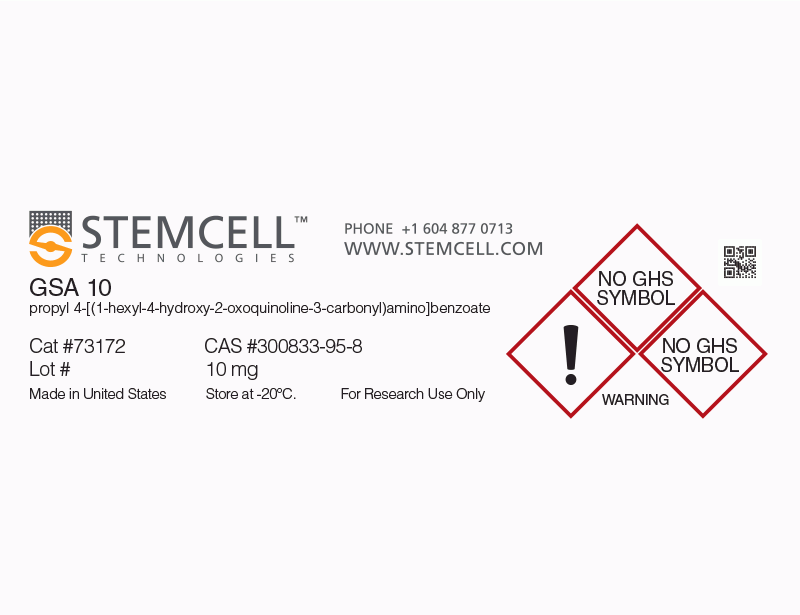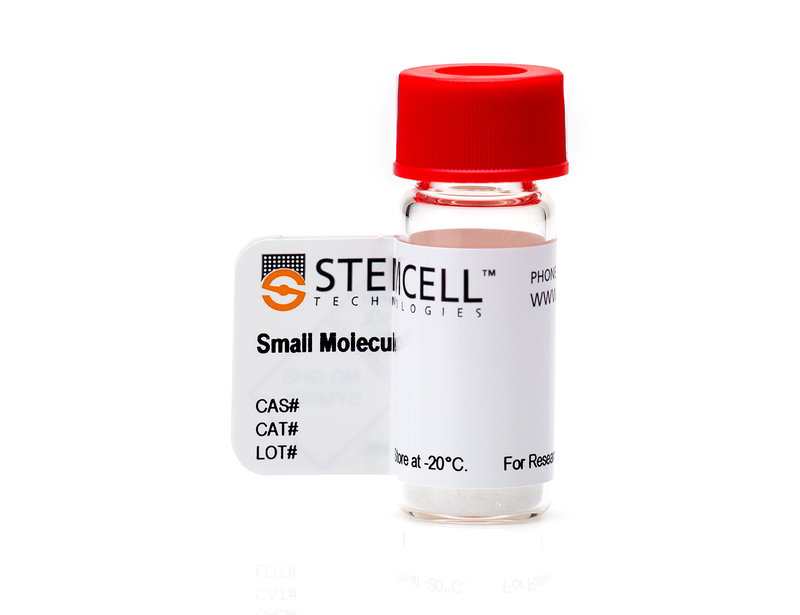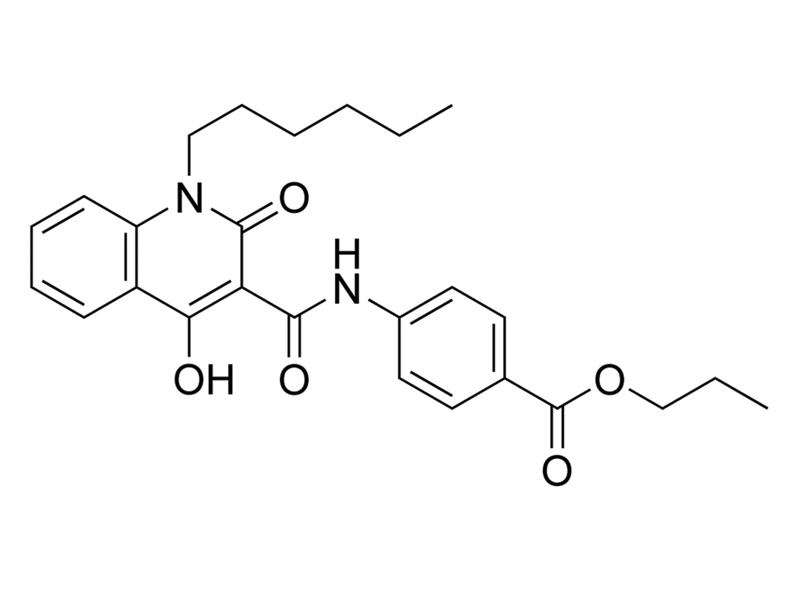GSA 10
Hedgehog pathway activator; Activates Smoothened (SMO)
概要
GSA 10 is an agonist of Smoothened (SMO), a cell surface receptor and mediator of the hedgehog signaling pathway. It is a quinolinecarboxamide derivative that binds in a distinct binding pocket from cyclopamine. GSA10 is active at an EC₅₀ of 1.2 μM in an alkaline phosphatase-based mouse mesenchymal cell line (C3H10T1/2) differentiation assay (Gorojankina et al.).
DIFFERENTIATION
· Promotes differentiation of multipotent mesenchymal progenitor cells into osteoblasts (Gorojankina et al.).
DIFFERENTIATION
· Promotes differentiation of multipotent mesenchymal progenitor cells into osteoblasts (Gorojankina et al.).
Alternative Names
Not applicable
Cell Type
Mesenchymal Stem and Progenitor Cells, Osteoblasts
Species
Human, Mouse, Rat, Non-Human Primate, Other
Application
Differentiation
Area of Interest
Stem Cell Biology
CAS Number
300833-95-8
Chemical Formula
C₂₆H₃₀N₂O₅
Molecular Weight
450.5 g/mol
Purity
≥ 95%
Pathway
Hedgehog
Target
SMO
技术资料
| Document Type | 产品名称 | Catalog # | Lot # | 语言 |
|---|---|---|---|---|
| Product Information Sheet | GSA 10 | 73172, 73174 | All | English |
| Safety Data Sheet | GSA 10 | 73172, 73174 | All | English |
数据及文献
Publications (1)
Molecular pharmacology 2013
Discovery, molecular and pharmacological characterization of GSA-10, a novel small-molecule positive modulator of Smoothened.
Abstract
Abstract
Activation of the Smoothened (Smo) receptor mediates Hedgehog (Hh) signaling. Hh inhibitors are in clinical trials for cancer, and small-molecule Smo agonists may have therapeutic interests in regenerative medicine. Here, we have generated and validated a pharmacophoric model for Smo agonists and used this model for the virtual screening of a library of commercially available compounds. Among the 20 top-scoring ligands, we have identified and characterized a novel quinolinecarboxamide derivative, propyl 4-(1-hexyl-4-hydroxy-2-oxo-1,2-dihydroquinoline-3-carboxamido) benzoate, (GSA-10), as a Smo agonist. GSA-10 fits to the agonist pharmacophoric model with two hydrogen bond acceptor groups and four hydrophobic regions. Using pharmacological, biochemical, and molecular approaches, we provide compelling evidence that GSA-10 acts at Smo to promote the differentiation of multipotent mesenchymal progenitor cells into osteoblasts. However, this molecule does not display the hallmarks of reference Smo agonists. Remarkably, GSA-10 does not recognize the classic bodipy-cyclopamine binding site. Its effect on cell differentiation is inhibited by Smo antagonists, such as MRT-83, SANT-1, LDE225, and M25 in the nanomolar range, by GDC-0449 in the micromolar range, but not by cyclopamine and CUR61414. Thus, GSA-10 allows the pharmacological characterization of a novel Smo active site, which is notably not targeted to the primary cilium and strongly potentiated by forskolin and cholera toxin. GSA-10 belongs to a new class of Smo agonists and will be helpful for dissecting Hh mechanism of action, with important implications in physiology and in therapy.




